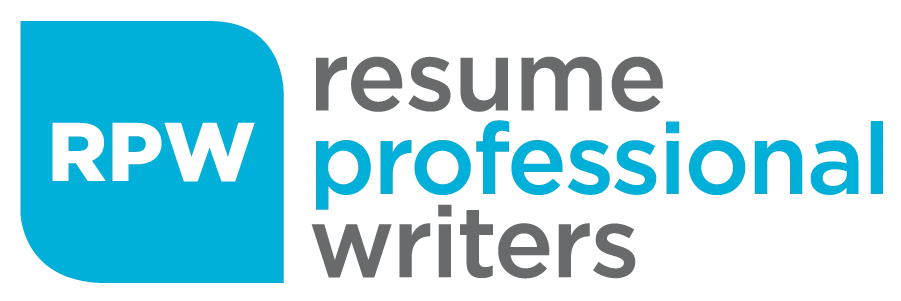Have you ever been asked, “Can you introduce yourself?” and found yourself stumbling over your words, unsure of where to start or what to include? If you’re wondering how to approach self-introductions, you’re not alone.
This deceptively simple question is one of the most common—and most important—openers in professional, academic, and social environments. Whether you’re in a job interview, at a networking event, or meeting new colleagues or classmates, how you introduce yourself sets the tone for the rest of your interaction.
In this guide, we’ll break down everything you need to know to confidently answer, “Introduce yourself” with clear examples, expert tips, and practical templates, providing answers to common self-introduction challenges and helping you make a lasting impression.

Why Is the “Introduce Yourself” Question So Important?
First impressions matter a lot. In professional settings, how you present yourself in the first 30 to 60 seconds can influence how people perceive your abilities, confidence, and value. Making a positive impression during your introduction is crucial, as it helps ensure you are remembered favorably and sets the tone for future interactions. The question “Can you introduce yourself?” often serves as an informal assessment of your communication skills, professionalism, and ability to synthesize your background into a coherent story.
When answered effectively, this question allows you to:
- Demonstrate clarity and confidence.
- Highlight your most relevant skills and experiences.
- Build rapport with your audience.
- Show alignment with the role, company, or community.
- Establish your personal brand.
It’s more than an icebreaker—it’s your opportunity to set the narrative and control the first impression people have of you.
When You Might Be Asked to Introduce Yourself
This question arises in a wide variety of contexts, such as at the beginning of a new school year, and how you respond should depend on where you are and who you’re speaking to. Let’s explore a few common scenarios:
1. Job Interviews
This is where the question matters most. Interviewers typically begin with “Tell me about yourself” or “Walk me through your background.” Here, they’re not looking for your full life story, they want to know whether your background fits the role and if you’re a good cultural and professional match. The hiring manager is often the person evaluating your introduction, so it’s important to tailor your response accordingly.
A strong answer here can set the tone for the entire interview and frame the way interviewers interpret your resume and subsequent responses. Be sure to highlight your relevant work experience to demonstrate your suitability for the position.
2. Networking Events and Conferences
At professional gatherings, your introduction acts as a verbal business card. It should be short, engaging, and informative, highlighting what you do, your key expertise, and your goals. Expressing that you look forward to connecting with others can make your introduction more engaging and show enthusiasm for networking. The goal is to spark interest and open the door for further conversation or potential collaboration.
After networking events, it’s important to follow up so you can hear back from new contacts and maintain effective professional communication.
3. First Day of Work or Class
In this context, your self-introduction is about connection, whether you are in a classroom setting with fellow students or starting a new job. It’s less formal but still purposeful. You want to share who you are, what you’ll be doing, and a touch of your personality or interests to build rapport with new colleagues or classmates. You can also use ‘hope’ to express positive expectations, such as saying you hope to build strong relationships with your new colleagues or classmates.
4. Professional Presentations or Workshops
When leading a meeting or giving a presentation, introducing yourself helps establish authority and credibility. Presentations are also an opportunity to teach and share your expertise with your audience. This kind of introduction is often longer, allowing you to explain your qualifications and why you’re the right person to speak on the topic. It’s important to deliver a clear message during your self-introduction to engage your audience and set the tone for your presentation.
Key Elements of a Strong Self-Introduction
Regardless of the setting, a good self-introduction should cover a few critical elements. It is important to be able to briefly explain your background, experience, or accomplishments to establish credibility and context. By combining these key elements, you can create a strong self-introduction that leaves a positive impression. Let’s break them down.
1. Your Name
Start clearly by stating your name. It sets a natural beginning and helps people focus on who you are. Don’t rush this part. Speak confidently and make eye contact.
2. Your Current Role or Background
Mention what you do professionally or academically. This helps the listener immediately understand your context. Are you a software engineer? A recent graduate? A marketing professional? Let them know.
Example: “I’m a marketing coordinator at a tech startup, where I manage digital campaigns and coordinate with cross-functional teams.”
Example: “I’m currently studying business administration at the university, focusing on digital marketing strategies.”
Example: “I’m a financial analyst with five years of experience helping healthcare companies optimize their operations and investments.”
3. Relevant Experience or Accomplishments
Briefly touch on your experience or achievements. This is especially important in interviews and networking contexts where you’re showcasing your value. Mentioning relevant research experience or developing innovative solutions can further demonstrate your expertise.
Example: “In my last role at ABC Corp, I led a project that saved the company $300,000 annually by redesigning their reporting process. I also contributed to research on workflow optimization and was involved in developing a new data analytics platform to improve decision-making.”
4. Your Goals or What You’re Looking For
Add a forward-looking element that tells people what you’re currently aiming for, whether it’s a new job, partnerships, growth opportunities, or to achieve your career goals.
Example: “I’m currently looking to join a dynamic team where I can contribute to product development, grow as a project manager, and work towards my long-term career goals for the future.”
5. A Personal Touch (Optional)
In less formal situations, share something about your interests, hobbies, or personality. It makes your introduction more relatable and memorable.
Example: “Outside of work, I’m a travel enthusiast and amateur photographer. This past summer, I volunteered as a camp counselor, which deepened my commitment to community service and supporting others.”
Crafting Your Self-Introduction: Examples for Every Situation
Let’s now apply these components to specific real-world settings. In the following section, you’ll find practical tips for crafting self-introductions tailored to various situations.
1. Job Interview Self-Introduction
Goal: To communicate your professional value and relevance to the role.
Sample Answer:
“My name is Daniel Reyes, and I’m a senior accountant with over seven years of experience in corporate finance and audit. I started my career with Deloitte, a leading organization, where I developed strong analytical and compliance skills working with multinational clients. Most recently, I was with a fintech company where I led the transition to a cloud-based accounting system that improved reporting efficiency by 40%. I’m excited about the opportunity to bring my expertise in financial operations to your organization and believe I can significantly contribute to your company’s continued growth and success.”
Why it works: It’s specific, professional, and tailored. It showcases Daniel’s experience, results, and career progression, while also aligning with the potential employer’s needs.
2. Networking Event Self-Introduction
Goal: To quickly share who you are, what you do, and what you’re looking for.
Sample Answer:
“Hi, I’m Rachel Lim, a UX designer with a focus on inclusive and accessible digital products. I’ve been working in the edtech space for the past four years, where I design mobile learning apps for underserved communities. I’m interested in connecting with others working on socially impactful tech solutions, and I’m looking forward to following up after the event this week.”
Why it works: It’s short, authentic, and engaging. Rachel explains her professional focus and interest, creating a strong conversation starter.
3. First Day of Work or Class Introduction
Goal: To introduce yourself and start building relationships.
Sample Answer:
“Hi, I’m Miguel Santos. I’m joining the company as a junior data analyst, and I recently graduated from Ateneo with a degree in Statistics. During my internship, I worked on data visualization projects that helped nonprofits better understand donor engagement. I’m originally from Davao, and in my free time, I enjoy playing chess and hiking. I’m really excited to be part of this team and contribute to meaningful projects.”
How to prepare: Before your first day, take some time to prepare what you want to say about yourself. Think about your background, interests, and what you want others to remember. Practicing your introduction can help you feel more confident, especially when meeting people in person.
Why it works: This balances professionalism and personality. It’s friendly, informative, and helps colleagues or classmates remember you. Making a good impression in person can set a positive tone for future interactions.
4. Presentation or Public Speaking Self-Introduction
Goal: To establish credibility and connect with your audience.
Sample Answer:
“Good afternoon, everyone. My name is Dr. Liza Mendoza, and I’m a leadership development consultant with 15 years of experience coaching executives across Southeast Asia. Focusing on organizational psychology, I’ve worked with both startups and Fortune 500 companies to improve team dynamics and leadership strategies. Today, I’ll be sharing practical techniques to build high-performing teams in hybrid work environments, a topic that I’ve researched extensively and implemented in various industries. I will also discuss strategies for raising awareness about effective communication within teams.”
Why it works: It builds credibility, showcases her expertise, and sets clear expectations for the presentation content.
Expert Tips for a Strong Introduction
Whether you’re writing your elevator pitch or preparing for an interview, keep these professional tips in mind. These helpful suggestions can make your self-introduction stand out and leave a strong impression. If you’re seeking advice on how to introduce yourself effectively, the following tips will guide you through the process:
1. Tailor your intro to the setting
Not all situations require the same level of detail or formality. Use judgment to match the tone of your introduction to the audience.
2. Practice without memorizing
Over-rehearsing can make you sound robotic. Instead, get comfortable with the key points and practice enough to sound confident and natural.
3. Keep it concise
Aim for 30–60 seconds unless you’re giving a formal presentation. People lose focus quickly. So get to the point, clearly and efficiently.
4. Highlight achievements, not job descriptions
Saying “I increased sales by 25%” is more impactful than “I managed sales accounts.”
5. End with a purpose
Wrap up by expressing enthusiasm, sharing your goal related to your job search, or inviting follow-up discussion.
“I’m excited about the opportunity to grow in this role and contribute to your marketing strategy as part of my job search for a position that aligns with my career goals.”
Common Pitfalls to Avoid
Even experienced professionals make mistakes when introducing themselves. Here are some common ones to watch out for:
- Going Off-Topic: Stick to relevant information. Avoid long-winded tangents about unrelated experiences.
- Sounding Too Humble or Too Arrogant: Aim for confident humility. Don’t downplay your accomplishments, but don’t boast either.
- Speaking Too Fast: Nervousness often leads to rushing. Practice slowing down and pausing between key points.
- Using Jargon: Unless you’re sure your audience is familiar with technical terms, keep your language clear and accessible.
A Self-Introduction Template You Can Use
Here’s a fill-in-the-blank template to help you get started:
“Hi, I’m [Name], a [Job Title/Student in X] with [Number] years of experience in [Field/Industry]. I specialize in [Skills/Expertise], and in my previous role at [Company/School], I [Achievement or Project]. I’m currently Job-Seeking/Networking/Starting New Role] and excited to [Goal or Interest]. Outside of work, I enjoy [Hobby or Fun Fact].”
Ready to Level Up Your Career Story? Let Us Help!
Crafting a strong self-introduction is a powerful way to set the tone for any professional interaction. However, if you’re unsure where to begin or want to refine your messaging for greater impact, expert guidance can be a game-changer. That’s where we come in.
Ready to level up your career story? Let us help. At Resume Professional Writers, we specialize in helping job seekers craft strong resumes, compelling cover letters, and powerful personal branding statements. This includes customized self-introductions for interviews and networking opportunities.
Whether you’re just entering the job market, changing career paths, or aiming for a leadership role, our team of expert resume writers is here to support you. We help you build a polished, achievement-focused resume, write tailored introductions and summaries aligned with your goals, guide you in practicing interview responses with confidence and professionalism, and optimize your LinkedIn profile for maximum visibility.
Start your success story today. Visit Resume Professional Writers to get your professionally written resume and personalized self-introduction package. Let us help you present the best version of yourself with clarity and confidence.








